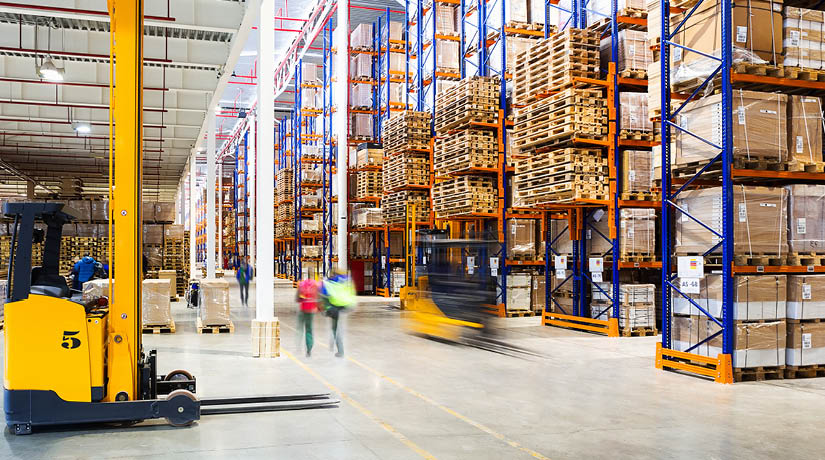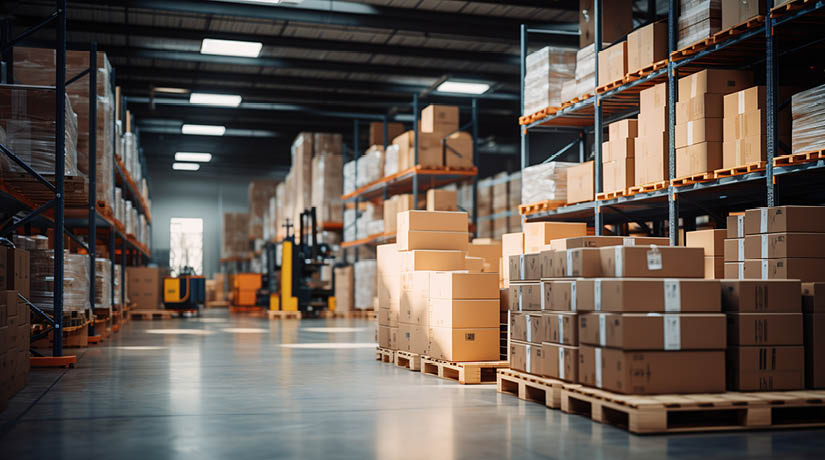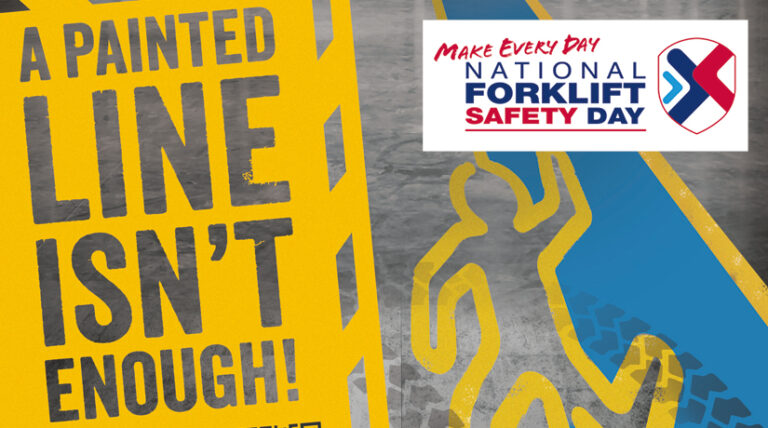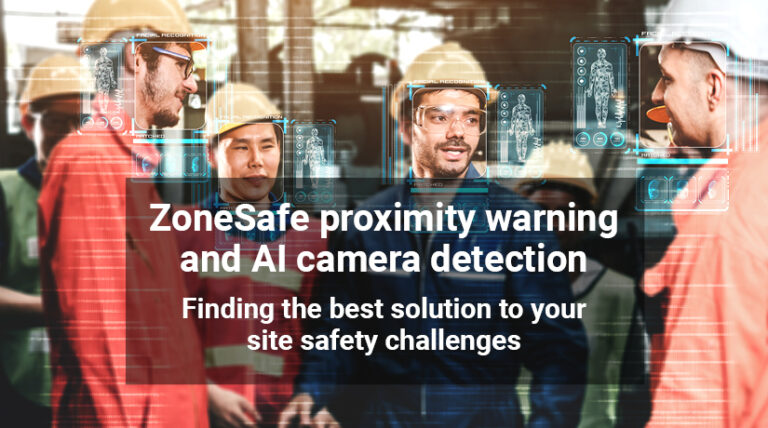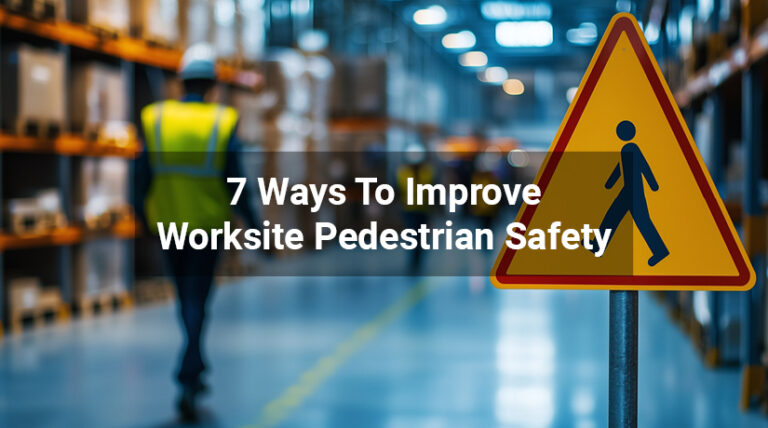It is well known that forklifts are involved in a disproportionate number of severe and fatal accidents every year. Their ability to move freely in limited space and carry heavy loads makes forklifts an important feature in many industries. However, with an average of five forklift accidents occurring daily in 1 the UK, implementing robust forklift safety solutions around their use must always be a top priority.
Common accidents include overturning, crushing incidents and collisions. All of these have the potential to result in life-changing injuries, death, and irreparable damage to business.
By improving safety around forklifts, businesses enjoy safe operations, a strong safety reputation, and increased productivity.
In this article, we look at some ways forklift safety can be improved.
What is the Importance of Forklift Safety Solutions?
Serious workplace accidents have severe repercussions for people and businesses. Implementing comprehensive forklift safety solutions is crucial to mitigate these risks.
Due to the weight and limited visibility of forklifts, collisions and rollovers often result in devastating consequences.
In 2019, a UK worker was crushed and killed when the forklift he was driving overturned. The 35-year-old man lost his life, leaving his family behind, and the company was fined £500,000 in damages. In 2022, a delivery worker suffered multiple fractures and other injuries when he was hit by a forklift truck. The company was fined £40,000 for failing to ‘implement a safe system of work for loading and unloading activities.’
The impact of these forklift accidents is far-reaching, changing lives and having a knock on negative effect on the business. The cost of legal fees, staff absence, retraining, and efforts to repair company reputational damage have the power to damage businesses financially, and many never recover.
Training and Certification
The use of manual handling equipment is subject to a number of regulations, including the Provision and Use of Work Equipment Regulations 1998 (PUWER) and Lifting Operations and Lifting Equipment Regulations 1998 (LOLER),
These provide minimum standards for safe use and maintenance programs. Training is also an obligation and crucial in avoiding common safety mistakes related to forklift use. All workers must be adequately trained, and forklifts should only be operated by people who are trained to do so. Forklift training requirements are outlined in the HSE Approved Code of Practice and Guidance.
Basic training should arm operators with the knowledge to operate a forklift safely. It should include both theoretical and practical elements and knowledge testing. Refresher training ensures knowledge is kept up to date and helps to avoid complacency. This is also an opportunity to review recent industry or company-specific incidents to use as learning points.
Maintenance and Inspections
Regular maintenance and thorough examination of forklifts are legal requirements. A careful examination is a mandatory inspection to ensure lifting equipment is in safe working order and must be completed at least once a year.
Pre-shift checklists help operators to ensure all components are in good working order before equipment use. Vehicle tyres, seatbelts, fluid levels, mirrors, lights and a functional testing of moving parts are some areas to include in pre-shift checks. All checks should fall in line with the manufacturer’s guidelines and any areas of concern should be raised through the company approved reporting system.
Regular maintenance not only extends the lifespan of equipment, but helps to highlight and raise the alarm for potential safety concerns – an important part of accident prevention.
Workplace Environment
Forklifts are highly adaptable to all sorts of surroundings, but adequate space is required for their safe operation. Clear signage, barriers, and floor markings are necessary to highlight potential risks associated with forklift use. Clearly marked separate pathways and turning circles are recommended if space allows.
Limited visibility in dark areas, entry points and at blind corners creates potential for accidents so ensuring sufficient lighting is an important consideration. Rules around using PPE should also be in place to protest workers and visitors.
Technology and Forklift Safety Solutions
In busy environments where forklifts are operating, the addition of safety technology can make a real difference. ZoneSafe Proximity Warning Systems create safer working environments by alerting workers and vehicle operators to risk. The easily applied pedestrian and vehicle detection system opens a line of communication between vehicles and pedestrians and raises the alarm before an accident occurs. ZoneSafe vehicle activating signage offers a highly engaging range of signs that automatically illuminate on approach, immediately raising awareness to potential hazards.
The application of these systems not only has a positive impact on overall safety, but creates an improved safety culture within the business, offering reassurance to all employees that they are safe at work and the employer is committed to safe working practice.
Implementing Comprehensive Forklift Safety Solutions
When working with forklifts, it’s important to apply a comprehensive safety program. The first step lies in identifying the potential risks through risk assessment and putting measures in place to counteract this.
Management and the workforce should be included in planning, to help identify potential threats that workers face. Safety procedures should also be regularly monitored to ensure they remain fit for purpose – creating a continuously improving safety program.
Forklifts are an important part of workplace equipment and play a vital role in operations but safety must always be front of mind. By committing to forklift safety, regular maintenance, robust training and an open, positive safety reporting culture, forklift use can be safe and the likelihood of incidents greatly reduced.
A proactive approach to safety is the best way to meet challenges head on and stop accidents in their tracks.
Speak to ZoneSafe to discuss your workplace safety concerns

